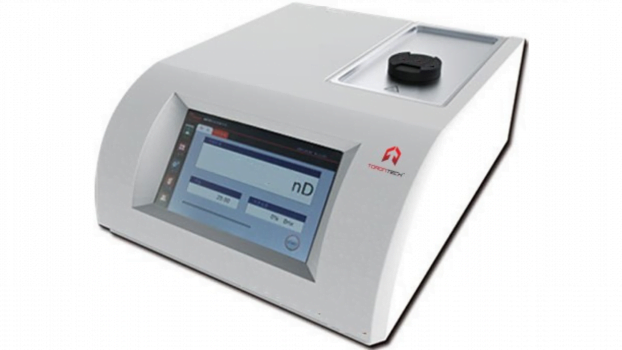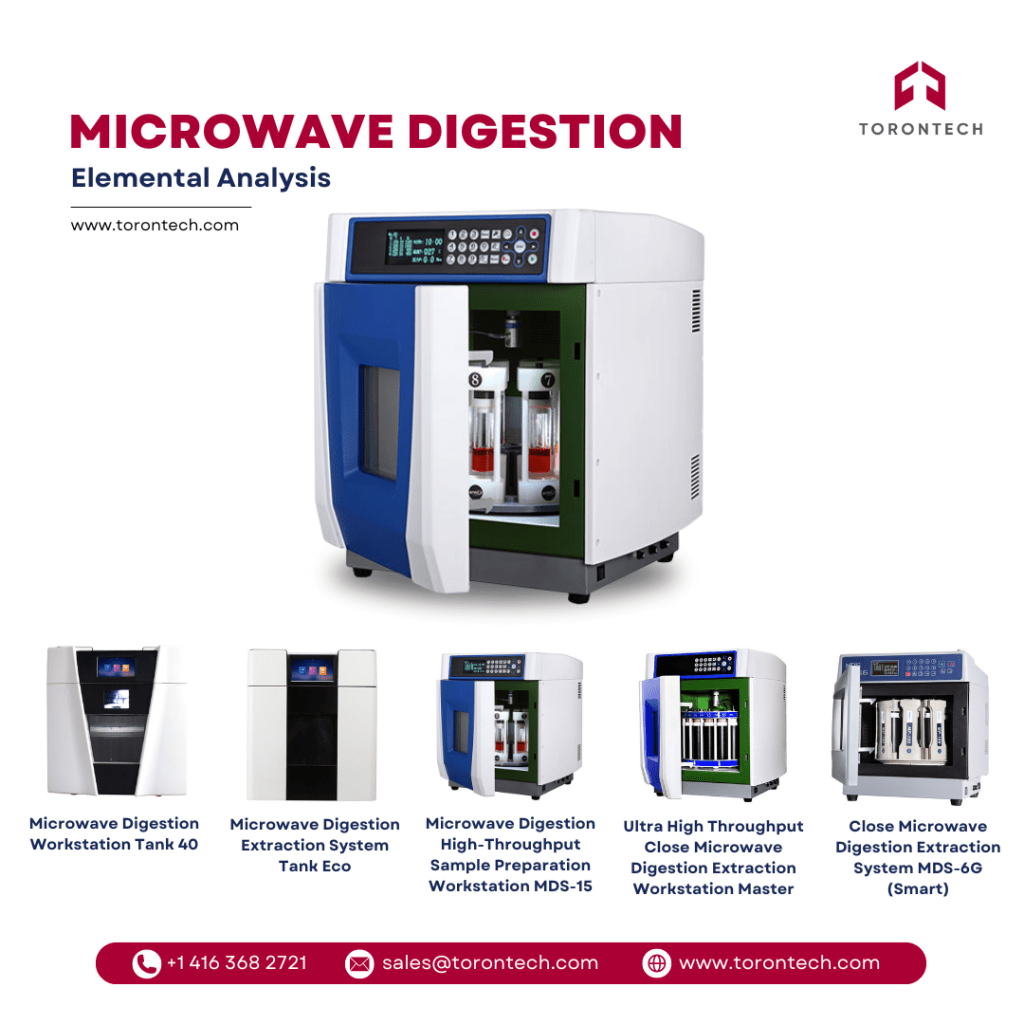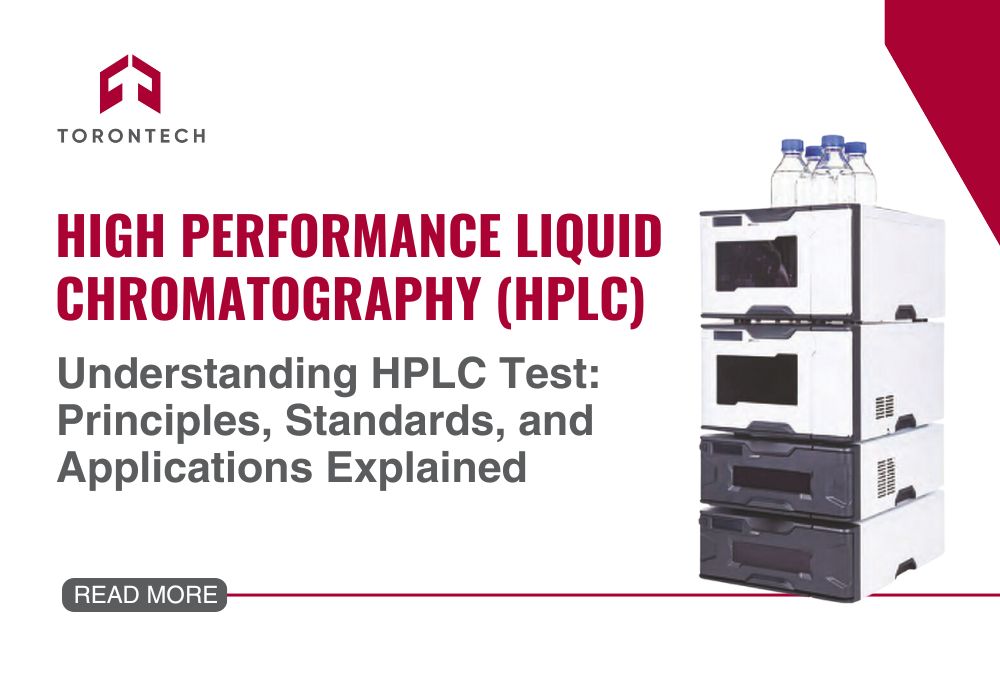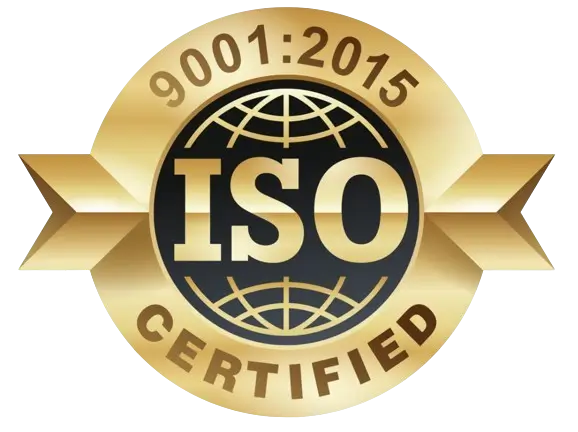Curious about how ultracentrifuges work and why they’re important in your lab? This article breaks down the principles behind these powerful tools, explores their various applications, and highlights the benefits they bring to your research.
Whether you are new to ultracentrifugation or looking to optimize your processes, you’ll find valuable insights here. Let’s explore.
Ultracentrifuge Definition
Ultracentrifuges are essential tools for precise particle separation in your lab. With their high-speed capabilities, they excel in tasks like DNA and protein isolation. These machines ensure your samples remain pure, delivering the reliable results you need for critical research and diagnostics.
When handling delicate materials, maintaining consistent temperatures is crucial. Ultracentrifuges not only spin at remarkable speeds but also keep samples cool, preventing degradation.
Whether you’re working in molecular biology or clinical research, these tools are designed to meet your demands. Are you seeking consistent, high-quality outcomes in your lab? Ultracentrifuges offer a dependable solution.
How Ultracentrifuges Work
What is ultracentrifugation? It’s a specialized technique designed for spinning samples at exceptionally high speeds, reaching up to 150,000 rotations per minute (rpm), equivalent to 1,000,000 g (Biocompare, 2019b). The principle of ultracentrifuge involves generating intense centrifugal force to separate particles based on size and density, essential for precise separations in various scientific fields.
The working principle of ultracentrifuge is crucial for maintaining sample integrity. To prevent overheating due to extreme centrifugal forces, ultracentrifuges are equipped with vacuum systems that keep the rotor’s temperature constant (Biocompare, 2019b). This ensures that delicate samples, such as DNA or proteins, remain undamaged during the separation process.
Applications of Ultracentrifuges

Understanding the applications of this tool will greatly benefit you in effectively separating biological samples like proteins, cells, and viruses. Let’s explore how this powerful tool can enhance your lab’s capabilities.
1. Ultracentrifugation for Protein Purification
Ultracentrifuges are important for isolating proteins from biological samples. The extreme centrifugal force separates molecules based on size and density, allowing for the purification of molecular biology specimens. This process is crucial in ensuring the purity and integrity of proteins for further analysis and application.
2. Separation of Cells
One key application of ultracentrifuge technology is the separation of cells from complex mixtures. By applying high-speed centrifugation, you can isolate specific cell types, making this process vital for preparing samples for various research and diagnostic purposes.
3. Virus Purification by Ultracentrifugation
Ultracentrifuges are instrumental in the ultracentrifugation of viruses, enabling the precise isolation of viral particles from biological samples. This method, known as virus purification by ultracentrifugation, ensures that viruses are separated from other cellular debris, which is essential for virology studies and vaccine development.
4. Purification of Molecular Biology Specimens
Another application of ultracentrifuge technology is the purification of molecular biology specimens. Whether you’re working with DNA, RNA, or proteins, ultracentrifuges allow for the detailed fractionation and purification necessary for accurate research and analysis.
5. Ultracentrifugation of Viruses
What are some applications for the ultracentrifuge? Ultracentrifuges are critical for the ultracentrifugation of viruses. This process involves separating viral particles from other components, ensuring that only pure viruses are isolated. This technique is fundamental in the study of virology and the production of vaccines.
These examples highlight the versatility and importance of ultracentrifuges in various applications, particularly in handling and purifying biological samples. Whether you’re isolating proteins, cells, or viruses, ultracentrifuges provide the precision and reliability needed for critical scientific processes.
Benefits of Ultracentrifuge for Laboratory
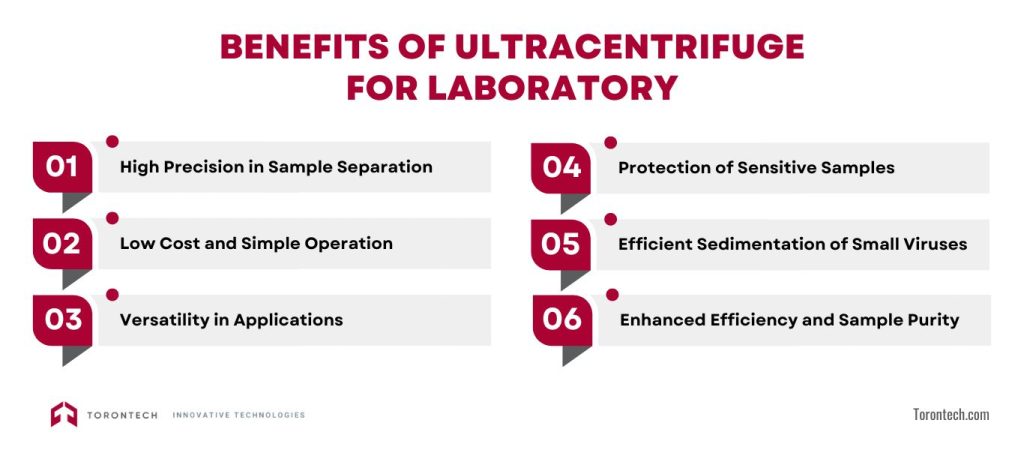
1. High Precision in Sample Separation
Achieving clear separation of proteins, cells, and other components is simple with ultracentrifuges. Their ability to spin at extremely high speeds ensures that you obtain accurate and reliable results, critical for research and diagnostic processes.
2. Low Cost and Simple Operation
Despite their advanced capabilities, ultracentrifuges offer an economical solution for complex separations. Their user-friendly design allows for straightforward operation, enabling you to perform high-precision tasks without extensive training or expensive maintenance.
3. Versatility in Applications
Ultracentrifuges are versatile tools that can be applied across a range of laboratory tasks. Whether you’re involved in ultracentrifugation of viruses, protein purification, or cell isolation, these machines offer the flexibility to handle various types of samples and processes with ease.
4. Protection of Sensitive Samples
Ultracentrifuges maintain a controlled temperature environment, which is crucial for protecting delicate samples. This feature prevents overheating and preserves the integrity of heat-sensitive materials, ensuring that your molecular biology specimens remain intact during high-speed centrifugation.
5. Efficient Sedimentation of Small Viruses
Ultracentrifuges excel at efficiently sedimenting even the smallest viruses. The intense centrifugal force ensures precise separation of viral particles, making these devices indispensable for virology research and applications that require pure viral isolates.
6. Enhanced Efficiency and Sample Purity
Ultracentrifuges significantly boost laboratory efficiency by reducing the time required for sample preparation. Additionally, they ensure that impurities are effectively separated from desired components, leading to higher sample purity and better outcomes in subsequent analyses.
These benefits highlight how integrating an ultracentrifuge into your laboratory setup can improve both the quality and efficiency of your work. Whether you’re focused on research, diagnostics, or development, an ultracentrifuge is an indispensable tool for achieving precise and reliable results.
Using an ultracentrifuge in your lab increases both accuracy and efficiency. Whether you’re purifying proteins or isolating viruses, this tool simplifies complex tasks. You’ll appreciate its precision and reliability in every process.
Ready to elevate your lab’s capabilities? An ultracentrifuge could be your solution. Explore your options and streamline your workflow today.
Frequently Asked Question (FAQ)
2. We handle high-value, temperature-sensitive biologics. How does an ultracentrifuge protect these critical assets?
Protecting your valuable samples is paramount, as sample degradation leads to costly rework and lost data. Ultracentrifuges are specifically designed to mitigate this risk. The extreme speeds generate heat, which is why our ultracentrifuge systems are engineered with advanced vacuum and refrigeration systems. These features maintain a stable, cool environment even at maximum g-force, ensuring the integrity of your most sensitive proteins, enzymes, and nucleic acids is preserved throughout the run.
3. Our lab works on diverse projects, from virology to proteomics. How can we justify the investment in a specialized machine like this?
The versatility of an ultracentrifuge is precisely what makes it such a strong long-term investment for a multi-disciplinary lab. While it is a specialized instrument, its applications are broad. The same machine used for purifying viral vectors for vaccine development can be reconfigured with a different rotor to isolate specific proteins for drug discovery. At Torontech, we work with our clients to ensure they select the right combination of rotors and accessories to maximize the utility of their ultracentrifuge, turning it into a flexible workhorse for numerous research initiatives.
4. How does the precision of an ultracentrifuge give our company a competitive advantage in R&D and diagnostics?
In a competitive field, the quality and reliability of your data are your biggest advantages. Ultracentrifuges provide a level of sample purity that is often unattainable with standard centrifuges. This high degree of separation ensures that downstream applications—whether it's protein analysis, genomic sequencing, or diagnostic assays—start with the cleanest possible material. This minimizes confounding variables, leads to more accurate and reliable results, and ultimately allows your team to make faster, more confident decisions that can accelerate project timelines and new discoveries.
5. Why is our choice of ultracentrifuge supplier so critical for our long-term operational success?
Your choice of supplier is critical because an ultracentrifuge is a major capital investment that must perform reliably for years. You need a partner who understands both the technology and your applications. At Torontech, we don't just supply an instrument; we provide a robustly engineered solution designed for durability and precision. We back our hardware with expert support to help you optimize your protocols and maintain your system, ensuring your ultracentrifuge remains a productive and reliable asset in your lab, driving your research forward with confidence.


